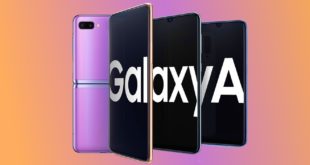![]()
For decades, various sci-fi shows have used various translation “devices,” which can automagically convert between the language of the speaker and the native language of the listener. From Star Trek‘s Universal Translator to the TARDIS translation matrix, it’s a handy way to handwave the fact that TV casts can’t be learning new languages every week. Even Star Trek Enterprise, which was supposed to be about the earliest days of spaceflight, and actually bothered to field a communications officer who was also a highly accomplished translator, inevitably began relying on the UT as a handheld device rather than showing communications officer Hoshi Sato laboriously translating each and every week.
Building such a unit that could handle human languages has been a sci-fi dream for decades. But no one has managed to pull it off, until (possibly) now.
Google’s new wireless neckbuds (two earbuds connected by a wire) are dubbed the Pixel Buds and pair with a mobile device using Bluetooth. Just as Apple’s AirPods can be used as conventional wireless headphones by any device with Bluetooth support, but only enable certain functions if you have a relatively new iPhone, Google’s Pixel Buds reserve some capabilities for Android devices. Google notes using Pixel Buds as a headset requires a minimum of either iOS 10 or Android 5.0. If you want to use them with Google Assistant, you need to own an Assistant-enabled device, Android 6.0 (or iOS 9.1, weirdly), a Google account, and a data connection.
“Jim, these Klingon hearing aids suck.”
If you want the universal translator application, you’ll need either a Google Pixel or Pixel 2. Supported languages are: English (US, UK, CA, IN, and AU), French (FR and CA), German, Japanese, and Portuguese. There’s a bit of confusion here, however. The support page for the Pixel Buds states that a list of supported languages can be found on the Google Assistant page, and the Google Assistant help page says the languages we just listed are the only ones supported in that application. More languages are supposedly coming soon. Google’s actual demo of the technology showed two people having a conversation in Swedish and English, with support for 40 languages overall.
It’s not clear if this iteration of Google Translate is based on the same fundamental service as its website translation system, which may be an important point. Google’s web translation is a hit-and-miss affair. Don’t mistake me–it’s frequently better than nothing at all, but the degree to which it approximates accuracy seems to depend on how close the ties are between the language being translated and English. I can’t claim to have done a scientific study here, but languages like Spanish or German seem to translate more accurately into English than languages like Chinese or Japanese. In a few cases, I’ve seen GT kick back results that were incomprehensible, even if the words were English.
The Linguistic Society has published an extensive article on why machine translation is so difficult. It’s worth a read, but we’ve excerpted an example below:
Consider the following question, stated in French: Ou voulez-vous que je me mette? It means literally, “Where do you want me to put myself?” but it is a very natural translation for a whole family of English questions of the form “Where do you want me to sit/stand/sign my name/park/tie up my boat?” In most situations, the English “Where do you want me?” would be acceptable, but it is natural and routine to add or delete information in order to produce a fluent translation. Sometimes it cannot be avoided because there are languages like French in which pronouns must show number and gender, Japanese where pronouns are often omitted altogether, Russian where there are no articles, Chinese where nouns do not differentiate singular and plural nor verbs present and past, and German where flexibility of the word order can leave uncertainties about what is the subject and what is the object.
It’s not that machine language translation can’t be effective–it’s that differences in language structure can result in imperfect information preservation, or necessary information being either improperly added or discarded when moving from one tongue to another. On the other hand, even a semi-effective universal translator could still be effective in a pinch, though the fact that it requires both wearers to be wearing Pixel Buds could cut down on its practical usefulness.
Still, this is closer than we’ve seen anyone come yet to turning science fiction into science fact, and we’re curious to see how the feature evolves from here. The fact that Google is restricting this technology to the Pixel and Pixel 2 means it’s going to take much longer to penetrate the market. But the company is clearly planning to push harder into the phone market, given its purchase of HTC’s phone assets earlier this year. Reserving this kind of capability for its own devices is a smarter move for Google than pushing it out for Android in general.
 #Bizwhiznetwork.com Innovation ΛI |Technology News
#Bizwhiznetwork.com Innovation ΛI |Technology News




